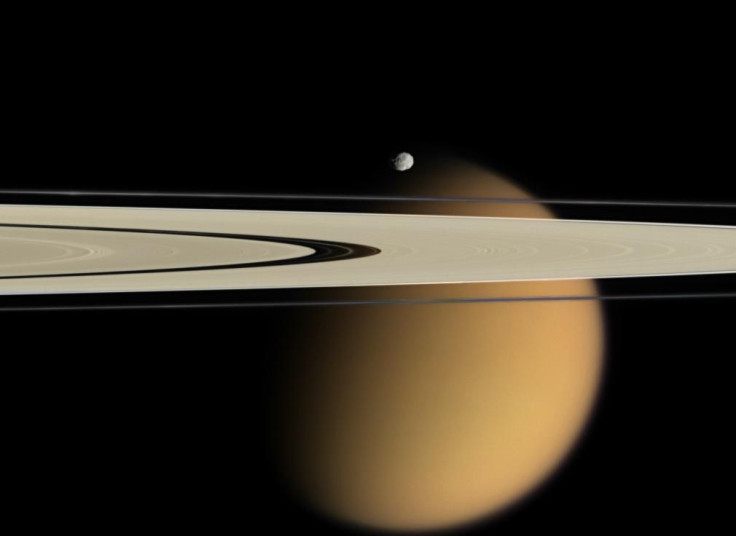Saturn Moon Titan Has Mysterious 'Ice Corridor' That Stretches For Miles

Among Saturn’s moons, Titan is considered to be the most interesting because of its vast geological activities. And now this lunar body once more showcased an interesting moon-wide feature: Ice corridors that cover almost half of Titan’s circumference.
According to a report, the still unidentified phenomenon is one of the more interesting discoveries found in Saturn’s major moon. The ice corridor described as “ribbons of ice,” basically covers 40 percent of the moon’s diameter.
The ice corridor or ice belt was discovered by a group of scientists from the University of Arizona who were studying the atmospheric processes of Titan. They were trying to identify clues that would point to cryovolcanism on the moon and explain where the moon gets its source of methane. The research, published in Nature Astronomy and led by Caitlin Griffith of the UA Lunar and Planetary Laboratory, failed to find any presence of cryovolcanoes but discovered something different altogether while exploring a region called Sotra.
Using images from NASA’s Cassini spacecraft, what they found was a band of water ice that interestingly stretches for more than 40 percent around the moon. Via principal components analysis (PCA), the scientists were able to spot trends on the landscape of the moon and identifying them pixel-by-pixel using the technique.
What’s mysterious about the band of ice is that it can’t be explained using the existing geological explanations of Titan’s atmospheric events. The ice belt is also described as uneven across the surface which hints that the ice could be eroding right now.
With this in mind, the UA scientists surmised that an explanation for this could still point to major cryovolcanic events and that the ice may have been deposited there because of it.
The Saturn moon’s atmosphere is made up mostly nitrogen, but there are also traces of methane. Methane, on Earth, is usually a sign of biological activities so it is a significant element when studying life. According to the report, solar radiation acts to break down methane molecules and rain down on the planet as organic sediments. The UA team hoped to find the moon’s methane supply when they discovered the belt of ice.
Right now there is no clear connection between the methane on Titan and the ice corridor.
© Copyright IBTimes 2025. All rights reserved.





















